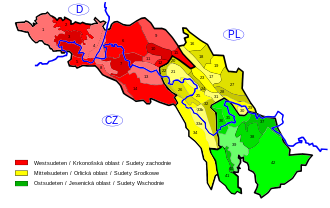This article only references primary sources.(May 2025) |

The Diduni or Dunii were a Germanic tribe mentioned only by the 2nd century geographer Claudius Ptolemy. They apparently dwelt near the Asciburgius mountains which correspond to the north central parts of Sudetes in western-southern Poland. According to Ptolemy, they were part of the larger tribal group, the Lugii. The Diduni are may be connected to the town of Lugidunum [1] , which Ptolemy places in the same area as he places the tribe. [1]
It is made up of the prefix 'di-', which is suggested to be analogous to the Latin suffix of 'de', meaning 'of', 'from', 'down from' or 'originating from', in addition to 'dun' and the latin suffix '-i' which would culminate to 'from the fort' [2] .